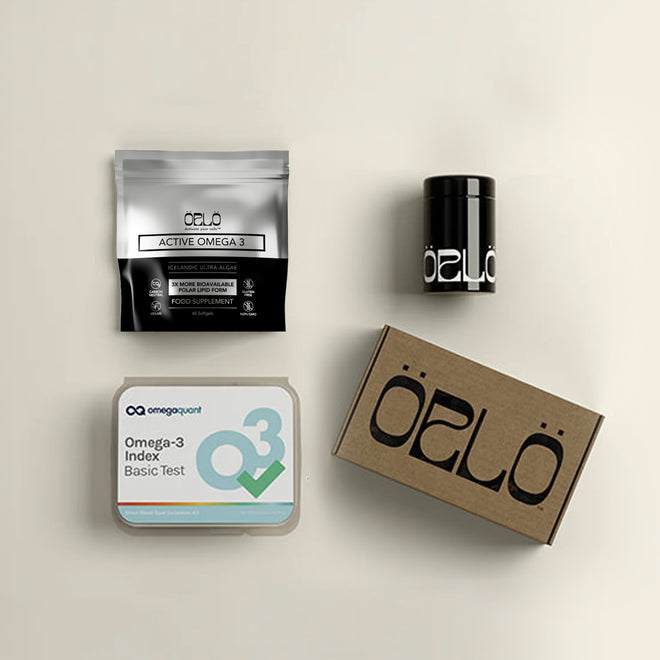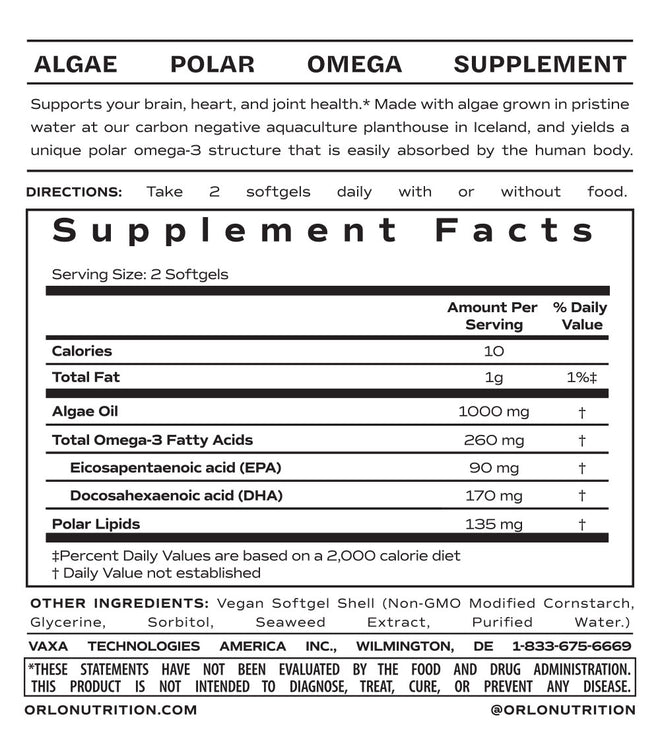25% Off - use code: HOLIDAYS
Algae Ink: A Carbon-negative Replacement For Petrochemicals In Printing & Apparel
This week’s Nutrition Without Compromise podcast episode features Scott Fulbright, co-founder and CEO of Living Ink Technologies. It is their mission to use sustainable algae technologies to replace petroleum-derived products, starting with inks. Their ecofriendly Algae Ink™ has a negative carbon footprint, is bio-based and safe. Scott invites us to allow our curiosity to thrive by asking questions and using nature as a template to find truly regenerative solutions.

Scott Fulbright, founder and CEO of Living Ink Technologies, pictured holding a can of algae ink in a print shop.
When it comes to health and nutrition, it is important to think holistically. The human body is made up of twelve systems comprised of 78 organs. Each organ and system may have individual names and specific functions but they all work in harmonization. The integumentary system is one organ system that includes the skin, hair, nails, and exocrine glands. As the protector of the body from the exterior environment and the first line of defense in the immune system, the skin is a major organ that plays a key role in our overall health. It is often left behind when we think of our health until we have a rash, dry skin, reaction, or injury. Yet, the skin is the largest organ in the human body and is porous. For this reason, what you put on your body is just as important as what you put in your body.
We absorb nutrients, pollutants, and toxins through our skin daily. The controversial statistics “the skin absorbs 64% of everything we put on it” and “it takes 26 seconds for your skin to absorb a chemical into your bloodstream” get tossed around often in blogs and cosmetic pitches. The actual numbers aren’t the point of focus here; the fact is our skin does absorb what is put on it. We see the evidence of this statement every time we use a moisturizer on dry skin. The question is, what am I allowing my skin to absorb?
Take a moment to observe your current state. What are you physically touching? What are you wearing? Possibly a cellphone, computer mouse, keyboard, a chair, eyeglasses, headphones, a watch, clothing, the list goes on. Do you know what the pigment is made from in the items you are touching and wearing? Did you put thought into the pigment in the items you wear and use daily when you purchased them? Scott’s curiosity sparked the light in us to start asking these vital questions.
Why it is important to stay curious about ink and pigments: everything is covered in pigment most of which is derived from petroleum. Petrochemicals are chemicals derived from petroleum. Humans are not designed to absorb petrochemicals. These hazardous chemicals can be absorbed by the skin and ingested into your body. Much of the carbon black pigment we see used in everyday products we touch, wear, and put into our mouths contain these harmful chemicals. Beyond plastics and packaging, carbon black is used in the cosmetic world. In items, we put in direct contact with our bodies and even rub them into our skin. Generally, found in products like eyeliner, mascara, lipstick, foundation, and more.
Algae is highly nutritious. We can source long-chain omega-3s our bodies need directly from algae. Algae is the primary source of omega-3s for fish. The risk of pollutant contamination is reduced when we go direct to the source to get the EPA and DHA we need. To further reduce that risk most algae used for supplements are grown in tanks. The polar omega-3 algae supplements by Örlö deliver three times the nutritional support of traditional omega-3 sources. Utilizing the plant power of algae results in a carbon-negative and waste-fee cultivation process. Örlö is providing sustainable nutrition by sourcing directly from the bottom of the food chain. Algae is considered “the vegetables of the sea” by many because of the various minerals and trace elements. Containing protein, healthy fat and carbs, fiber, folate, iron, magnesium, and more! These are essential nutrients bodies require to thrive and ultimately obtain optimal health. Consuming algae potentially improves thyroid function, heart health, immune function, digestive health, weight management, control blood sugar, and reduce cancer risks.

Sushi, rolled with nori (seaweed) and topped with seaweed salad. Photo by Önder Örtel on Unsplash.
All bodies respond and react differently when exposed to chemicals, toxins, and pollutants. The best course of action is to eliminate our exposure. Utilizing products and pigments derived from algae we could potentially be absorbing nutrients rather than petrochemicals. Eliminating our exposure while increasing our chances of optimal health daily.
On Nutrition Without Compromise, we want optimal health on a personal level without compromising Earth’s health. The list of carbon black products doesn’t end at personal items and plastics. We must consider the start point for these products. The extraction process required to obtain the raw materials to create ink derived from petroleum has a large carbon footprint. Adding in the refining process increases it. The carbon dioxide and other toxins released into the air are taking away from the health of Earth and ourselves. Items like car tires, concrete, and plasters make direct contact with our ecosystem by causing runoff into lakes, rivers, streams, increasing pollution in our oceans that may not be visible to the naked eye. The end for many of these non-biodegradable products are landfills where they will sit for years to come. This process is not working with our ecosystem; it is uprooting it causing environmental degradation. Beyond the ecosystem, using finite resources is not reliable long-term. We will eventually run out of the raw material we are extracting reinforcing the need for renewable solutions.
Algae Ink™ is a bio-based eco-friendly material derived from the world’s first plant and most reliable resource of oxygen, algae! Over half of the oxygen we breathe comes from algae. Contributing to our oxygen intake rather than releasing toxins in the air we breathe. The exponential growth rate of algae requires it to be harvested daily. When this is harnessed correctly it is an extremely powerful renewable source in many applications. Living Ink Technologies has just begun its quest to use sustainable algae technologies to replace petroleum-derived products.
The product possibilities of using algae as a renewable resource are endless. The pigment opportunities go far beyond ink on paper and textiles. The clothing you wear, blankets, sheets, and towels you use daily could be colored with algae pigment one day! Materials dyed with nutrient-rich, bio-based pigment could be the future we live in. With the curiosity of a two-year-old inventions from algae are impacting the fashion world as you read this. Companies working together to bring high-quality and sustainable products that meet the needs of consumers is a reality. Living Ink Technologies has partnered with familiar brands like Patagonia and Adidas. Companies like Farm Fresh are using Living Ink Technologies Algae Ink™ to print on organic t-shirts. Bloom’s goal is to impact the footwear industry with algae-based products as well. Originally famous for their algae-based foam has now expanded with thermoplastic rubber and thermoplastic elastomers (TPE). It doesn’t end at clothing and inks either! Notpla is making plastics disappear by creating packaging from algae that biodegrades. They have even created packaging that dissolves in your mouth, eliminating the need for small plastic cups at marathons, taste testing, and other large events. A future using only biodegradable plastics and packaging can be a reality. The applications with algae are endless!
We are sharing one ecosystem here, stay curious about the world around you and start asking how can we use nature as a template to better our nutrition and the health of Earth.
Resources:
- https://livingink.co/faq-2
- https://www.woohoobody.com.au/blogs/news/your-skin-absorbs-everything-you-put-on-it
- https://seriouslysensitivetopollution.org/2012/12/30/petrochemicals-and-human-health/#:~:text=So%20much%20evidence%20is%20pointing,including%20cancers%20and%20endocrine%20disruption
- https://www.nature.com/articles/s41598-020-69536-4
- https://nutritionfacts.org/topics/algae/
- https://www.bloommaterials.com/
- https://farmfreshclothingco.com/
- https://www.notpla.com/
- https://www.healthline.com/nutrition/seaweed-healthy-nutritious#benefits















